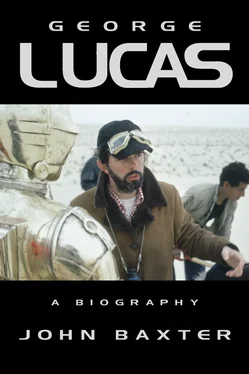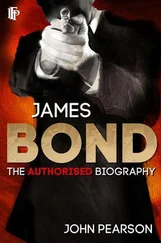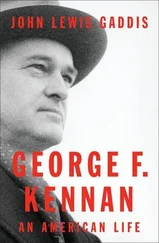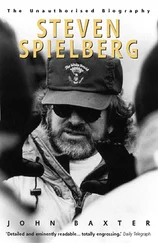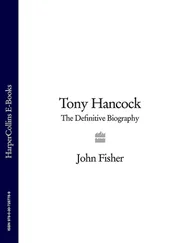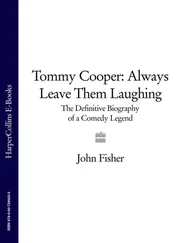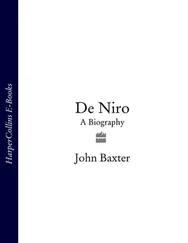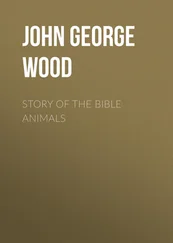To open a production company in San Francisco, Coppola needed a film contract. He persuaded the new administration at Warners that he wasn’t to blame for the failure of Finian’s Rainbow . It was a product, he argued, of the old and outdated system fostered by Jack Warner, now swept away. The Rain People , on the other hand, was a movie for the new Warners.
It was a shrewd strategy. Warners-Seven Arts visualized itself as a studio for the decade of Easy Rider . Its boss, Steve Ross, was a silver-haired, smooth-tongued operator who had taken Kinney out of the mortician business into car hire by renting out at night the limos used for funerals by day. They moved into parking lots, despite the fact that this was a territory that had been associated with organized crime, and then diversified into movies. The studio head was Ted Ashley, a hot talent agent taking his first turn behind an executive desk. John Calley was his lieutenant. Their department for youth films and products was run by Fred Weintraub, who’d made a fortune selling clothing and entertainment to college audiences and running a chain of campus coffee shops.
Coppola played on Warners’ greed to sell them a radical proposal. Once his new company was up and running, he would guarantee them seven feature films, none costing more than a million dollars, the first of which would be the long version of THX1138 , which he budgeted – seven being his lucky number – at $777,777. This would be followed by The Conversation , a Coppola original about surveillance experts, probably starring Marlon Brando as ‘the best bugger on the West Coast.’ He threw in scripts by Huyck and Katz, and Robbins and Barwood. Scratching for ‘go’ projects, he also offered Lucas and Milius’s Vietnam film Apocalypse Now .
For the make-or-break meeting, Coppola flew down to Los Angeles, but, Easy Rider-like , rode onto the lot astride a huge Harley Davidson. He was well prepared, with the help of Lucas, who gave Charley Lippincott $100 to create a montage of ‘underground’ films to show the Warners board. ‘We put together this presentation showing that it was going to be futuristic,’ said Lucas, ‘and outlining how we were going to be shooting it on location and such. And we put in there that we were going to develop this very unusual reality using “rotary-cam photography.” Fortunately nobody at the studio asked us what it was, because it was nothing.’
After this, Coppola moved in. He had a new movie ready to go, he told the suits. Here’s the script – he slammed down a draft of THX1138 , which he’d barely read. Here’s the cast – except for Robert Duvall and Donald Pleasence, all were unknown, and none had yet been asked if they wanted to appear. ‘Where is the money?’ he asked them rhetorically. He departed in a roar of exhaust, leaving them to chew on his proposal. The next day, when he still hadn’t received the green light, he wired them: ‘PUT UP OR SHUT UP’ – or, in some versions, ‘SHAPE UP OR SHIP OUT.’
Warners did put up, but not as whole-heartedly as Coppola had hoped. They offered to lend – not advance or invest – $3.5 million, part of it in the form of $2500 a week seed-money while Coppola was setting up his company. If they liked THX1138 , this sum could become a down-payment on the package. If they didn’t, Coppola would have to refund every penny. Given that he had no other offers, Coppola agreed.
Lucas received the news with delight. The way Coppola described it to him, the strings attached to Warners’ offer became thistledown. Immediately, he and Coppola, with Korty’s help, began visiting mansions in Marin County, looking for the future headquarters of the company. They made an offer on the Dibble estate in Ross, but while Coppola was raising the money, it went to someone else. The buyer already owned another mansion, and Coppola offered on that too, only to have the zoning commission refuse his application to transform it into a film studio.
Gradually, Coppola turned against the Laterna model. If he couldn’t find a mansion, maybe he should look for something in San Francisco itself – where, in addition, staff and services were more readily available. Dismayed, Lucas argued that the whole point had been to abandon city influences. He cited Korty’s rural retreat. All he wanted, he said, was ‘a nice little house to work in.’ But Coppola bulldozed him. The sound equipment would arrive shortly from Germany, and they must have a place to install it. Anyway, their working capital was all his, raised by selling his Los Angeles house and taking out substantial loans on the promise of a Warners deal.
Korty found a recording studio at 827 Folsom Street, in what locals derisively called the ‘warehouse and wino’ section of San Francisco, and Coppola leased three floors. Once Coppola had persuaded Korty to become the first tenant of their new facility, Lucas threw up his hands. Francis had won again.
Eleanor Coppola conceived and managed the décor of the new facility while Francis toyed with names. His first choice, ‘Transameri-can Sprocket Works,’ traded on the current taste for the Edwardian, which had hippie girls wandering Haight-Ashbury in Pre-Raphaelite braids and gypsy skirts, accompanied by men in crimson pre-World War I military tunics over jeans and sandals. Remembering Laterna’s magic lanterns, Coppola finally chose ‘American Zoetrope,’ after the optical toy of a spinning drum with vertical slits through which one glimpses dancing or running figures.
The Rain People , proudly bearing the American Zoetrope logo, opened on 27 August. Reviews were mixed, but Coppola brushed them aside, consumed by the fulfilment of his dream. The new company’s name not only implied that it could do everything from A to Z, but, once it was launched as a public company, would alphabetically give it a spot near the top of the share listings.
For the moment, however, nobody but Coppola owned any shares – not even Lucas, whom he grandly named vice president. Mona Skarger, one of the producers on The Rain People , became secretary-treasurer. Christopher Pearce was general manager. Jobs were also found for Bart Patton, Bob Dalva and Dennis Jakob, all cronies of Coppola, some going back to high school and Hofstra. Perhaps thinking of insinuating someone more personally loyal to him than to Coppola, Lucas offered the job of head of intellectual property – basically head of development – to Charley Lippincott, who turned him down. He didn’t want to move to San Francisco, nor to give up his ambition to make documentary films.
Being located in San Francisco had one definite advantage for Lucas and Coppola: few films were made there, and the local branch of IATSE, its hands full with mainly theatrical technicians, didn’t look too closely at who did what at Zoetrope. Cameramen could record their own sound, and even direct. The union listed Walter Murch as simply a post-production worker, a flexible term that could encompass editing, sound editing, even scriptwriting.
The day they took over the building, Coppola ordered everyone up on the roof and had them photographed: Korty, Carroll Ballard and an unknown guy – already names were being forgotten – each with a hand-held 16mm camera; Milius in sombrero and bandoliers; Warners’ liaison man Barry Beckerman; Lucas, almost unrecognisable in heavy beard and wide-brimmed black felt hat, like some middle-European anarchist; Bob Dalva, also with camera; Larry Sturhahn, later to be the producer of THX ; Al Locatelli, its eventual production manager, incongruously playing a flute; Dennis Jakob, crouched behind an enormous piece of sound equipment. And of course Francis, dressed in a long double-breasted coat and a felt hat with turned-up brim, and clutching a zoetrope under his arm – the model for an allegorical statue in some Sicilian square of the town’s great explorer who had encompassed the world.
Читать дальше
